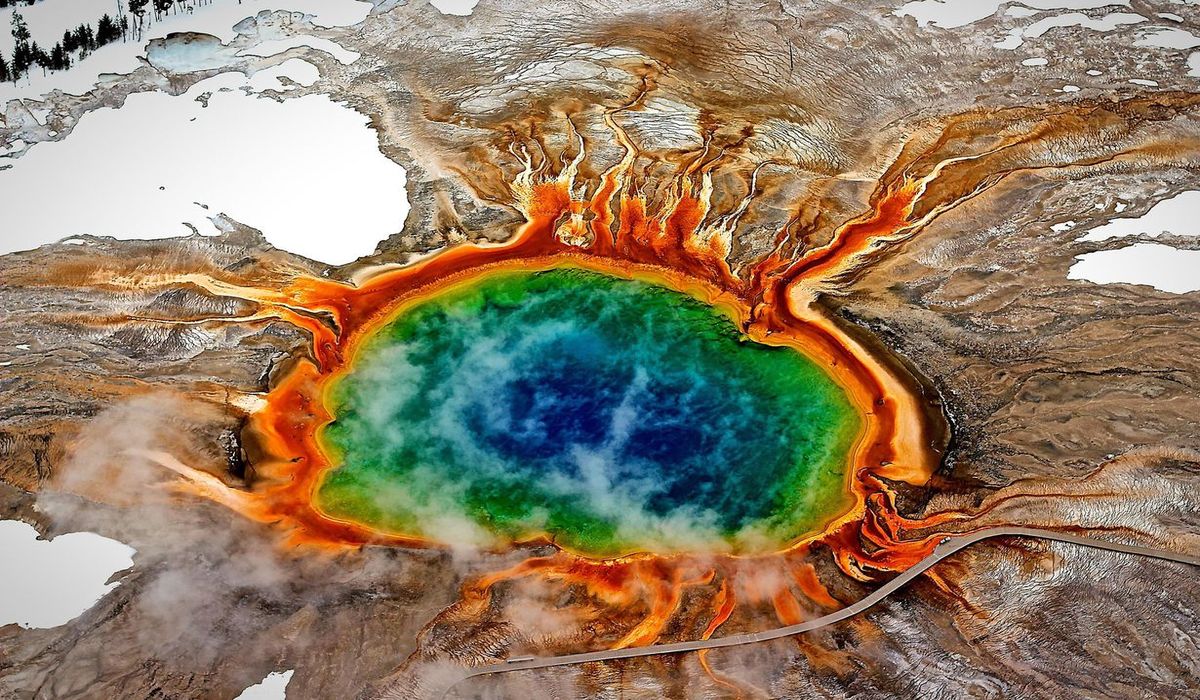
Did you know that Yellowstone National Park sits atop a supervolcano? This massive volcanic system has erupted three times in the past 2.1 million years. The last eruption occurred about 640,000 years ago, creating the Yellowstone Caldera. But what would happen if Yellowstone erupted today? Scientists predict it would be a catastrophic event, spewing ash across North America and affecting global climate. While the chances of an eruption in our lifetime are slim, the park remains a hotspot for geothermal activity. Geysers, hot springs, and fumaroles are constant reminders of the powerful forces beneath the surface. Curious to learn more? Here are 30 fascinating facts about Yellowstone's volcanic history and potential future eruptions.
Yellowstone's Volcanic History
Yellowstone National Park is famous for its stunning landscapes and geothermal features. However, beneath its beauty lies a supervolcano with a history of massive eruptions.
- Yellowstone's supervolcano has erupted three times in the last 2.1 million years.
- The largest eruption, known as the Huckleberry Ridge eruption, occurred about 2.1 million years ago.
- This eruption was 2,500 times more powerful than the 1980 eruption of Mount St. Helens.
- The second major eruption, the Mesa Falls eruption, happened approximately 1.3 million years ago.
- The most recent eruption, the Lava Creek eruption, took place around 640,000 years ago.
The Caldera and Its Formation
The caldera is a large volcanic crater formed by the collapse of a volcano into itself, making it a significant feature of Yellowstone.
- Yellowstone's caldera measures about 30 by 45 miles.
- The caldera was formed during the last major eruption 640,000 years ago.
- The collapse of the caldera created a massive depression in the Earth's surface.
- This depression filled with lava and ash, forming the landscape we see today.
- The caldera is still active, with magma lying just a few miles beneath the surface.
Geothermal Activity
Yellowstone is home to more than half of the world's geysers and numerous hot springs, fumaroles, and mud pots.
- Old Faithful, one of the most famous geysers, erupts approximately every 90 minutes.
- The park contains over 10,000 geothermal features.
- The Norris Geyser Basin is the hottest and most dynamic part of Yellowstone.
- Steamboat Geyser, the world's tallest active geyser, can shoot water over 300 feet into the air.
- The geothermal activity is a direct result of the heat from the underlying magma chamber.
Potential Eruption Impact
An eruption of Yellowstone's supervolcano would have catastrophic effects on a global scale.
- An eruption could spew ash over thousands of miles, affecting air travel and climate.
- The ash could cover large parts of North America, disrupting agriculture and water supplies.
- A significant eruption could lead to a "volcanic winter," drastically cooling the Earth's climate.
- The eruption could release large amounts of sulfur dioxide, leading to acid rain.
- The economic impact would be enormous, potentially costing trillions of dollars.
Monitoring and Predictions
Scientists closely monitor Yellowstone for signs of volcanic activity to predict potential eruptions.
- The Yellowstone Volcano Observatory (YVO) was established to monitor the supervolcano.
- YVO uses seismographs, GPS, and satellite data to track ground movements and volcanic activity.
- Increased seismic activity, ground deformation, and gas emissions are key indicators of potential eruptions.
- Scientists have not detected any signs of an imminent eruption.
- Predicting the exact timing of an eruption remains challenging due to the complexity of volcanic systems.
Myths and Misconceptions
There are many myths and misconceptions about Yellowstone's supervolcano and its potential eruption.
- One common myth is that an eruption is overdue, but volcanic activity does not follow a strict schedule.
- Another misconception is that an eruption would wipe out all life on Earth; while devastating, it would not be an extinction-level event.
- Some believe that drilling into the caldera could trigger an eruption, but this is highly unlikely.
- The idea that Yellowstone erupts regularly every 600,000 years is a simplification; volcanic activity is more complex.
- Despite the potential danger, Yellowstone remains a popular tourist destination, attracting millions of visitors each year.
Yellowstone's Fiery Secrets
Yellowstone National Park holds some of the most fascinating geological features on Earth. Its supervolcano, with the potential for massive eruptions, keeps scientists on their toes. While the chances of an eruption happening soon are slim, the park's geothermal activity is a constant reminder of the powerful forces beneath our feet. Geysers, hot springs, and fumaroles offer a glimpse into this dynamic underground world.
Understanding Yellowstone's volcanic history helps us appreciate the delicate balance of nature. The park's unique ecosystem thrives despite the underlying volcanic activity. Visitors can marvel at the beauty while respecting the raw power that lies below.
Yellowstone isn't just a natural wonder; it's a testament to Earth's ever-changing landscape. So next time you visit, remember the fiery secrets that make this place truly extraordinary. Stay curious, stay informed, and enjoy the wonders of Yellowstone.
Was this page helpful?
Our commitment to delivering trustworthy and engaging content is at the heart of what we do. Each fact on our site is contributed by real users like you, bringing a wealth of diverse insights and information. To ensure the highest standards of accuracy and reliability, our dedicated editors meticulously review each submission. This process guarantees that the facts we share are not only fascinating but also credible. Trust in our commitment to quality and authenticity as you explore and learn with us.
